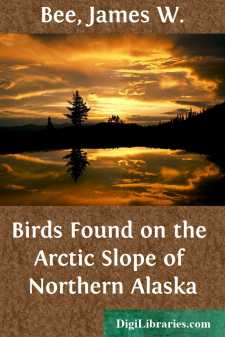Categories
- Antiques & Collectibles 13
- Architecture 36
- Art 48
- Bibles 22
- Biography & Autobiography 813
- Body, Mind & Spirit 142
- Business & Economics 28
- Children's Books 17
- Children's Fiction 14
- Computers 4
- Cooking 94
- Crafts & Hobbies 4
- Drama 346
- Education 46
- Family & Relationships 57
- Fiction 11829
- Games 19
- Gardening 17
- Health & Fitness 34
- History 1377
- House & Home 1
- Humor 147
- Juvenile Fiction 1873
- Juvenile Nonfiction 202
- Language Arts & Disciplines 88
- Law 16
- Literary Collections 686
- Literary Criticism 179
- Mathematics 13
- Medical 41
- Music 40
- Nature 179
- Non-Classifiable 1768
- Performing Arts 7
- Periodicals 1453
- Philosophy 64
- Photography 2
- Poetry 896
- Political Science 203
- Psychology 42
- Reference 154
- Religion 513
- Science 126
- Self-Help 84
- Social Science 81
- Sports & Recreation 34
- Study Aids 3
- Technology & Engineering 59
- Transportation 23
- Travel 463
- True Crime 29
Birds Found on the Arctic Slope of Northern Alaska
by: James W. Bee
Description:
Excerpt
In the summers of 1951 and 1952 some data on birds were gathered incidental to a study of the mammals of the Arctic Slope of northern Alaska (see Bee and HallâMammals of Northern Alaska ..., Univ. Kansas Mus. Nat. Hist., Miscl. Publ., 8, March 10, 1956). Other students, currently preparing comprehensive accounts of the birds of northern Alaska, have urged that the information obtained in 1951 and 1952 be made available. For that reason, and because relatively little is on record concerning birds of the area visited, I have prepared the following account. The aim is to include only non-published data because the comprehensive accounts alluded to above, by others, can more appropriately include data from previously published accounts.
The area is the treeless tundra delimited by the crest of the Brooks Range to the south, the international boundary to the east and the Arctic Ocean to the north and west.
Three hundred and fifty-one birds of 44 species (Nos. 30371-30866, and 31301-31355) were collected. Twenty-nine additional species were seen. All specimens are skeletons, unless otherwise noted in the text, and are catalogued and housed at the Museum of Natural History, University of Kansas. Photographs are by the author.
The report results from a contract (Nonr-38700) between the Office of Naval Research and the Museum of Natural History of the University of Kansas. Field headquarters were at the Arctic Research Laboratory at Point Barrow, Alaska. Professor John Fields and Dr. Louis O. Quam of the Office of Naval Research, Professor Ira L. Wiggins, Scientific Director of the Arctic Research Laboratory, and Mr. M. R. Lipman of the University of Kansas Regional Office of the Office of Naval Research are four of the persons to whom I am deeply indebted. J. Knox Jones, Jr., and Edward G. Campbell, students at the University of Kansas, participated in the field work and deserve credit for a large part of the accomplishment registered in the field.
The author is greatly indebted to Professor E. Raymond Hall for assistance at many stages in the work. I am grateful to Professor Harrison B. Tordoff for numerous suggestions and for verifying the identifications of the specimens. The skeletons were identified by measurement and comparison of feet, bills, and the dried, flat skins that had been removed and labeled with the field numbers of the corresponding skeletons. Where subspecific identification was difficult because of the fashion in which the material was preserved it should be understood that the subspecific name assigned was based largely or entirely on geographic probability. This is wholly true for sight records. Robert G. Bee read the manuscript in its entirety and offered editorial comments and my wife, Annette, typed the manuscript and made numerous corrections. The names of several other individuals who rendered assistance appear at appropriate places in the following pages.
ITINERARY
Camps and collecting localities on the Arctic Slope of northern Alaska in 1951 and 1952 (Bee and Jones, July 3-September 6, 1951; Bee, September 6-11, 1951; Bee and Campbell, June 14-August 25, 1952; Bee, Campbell, and Hall, August 26-September 12, 1952) were as shown in
.Camps, and localities in the vicinity of each camp, are arranged geographically from north to south. The localities listed below under camps are only those which one or more of us (Bee, Campbell, Jones and Hall) visited. Travel between camps was by airplane; heavy black lines show routes followed.
Point Barrow (1951: July 3-5, 10-12, 18-20, 27-29, Aug. 5-7, 28-30, Sept. 4-11. 1952: June 14-24, Aug. 23-27, Aug. 31-Sept. 12). Longitudes and latitudes taken from U. S. Coast and Geodetic Survey map No. 9445, 2nd edition, Point Barrow and vicinity, corrected May 21, 1951....


